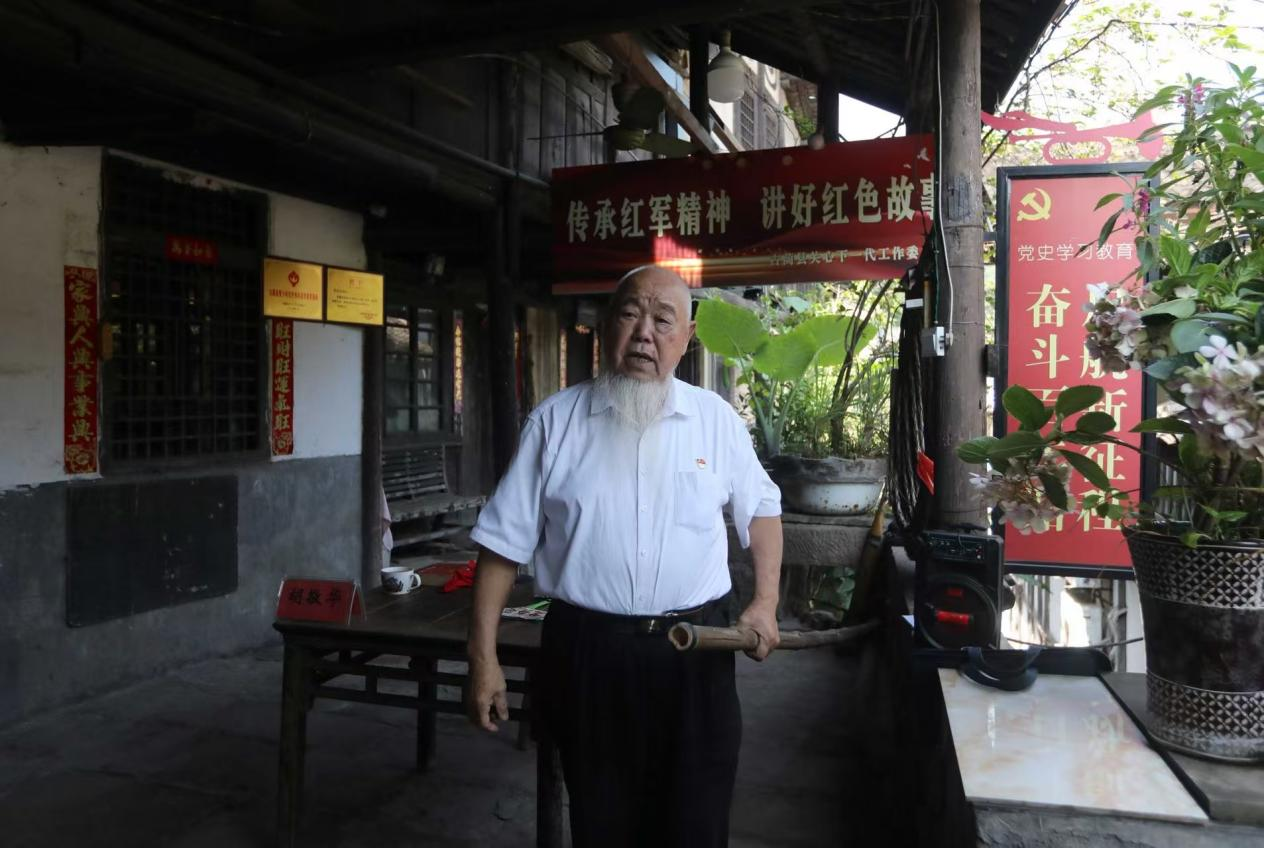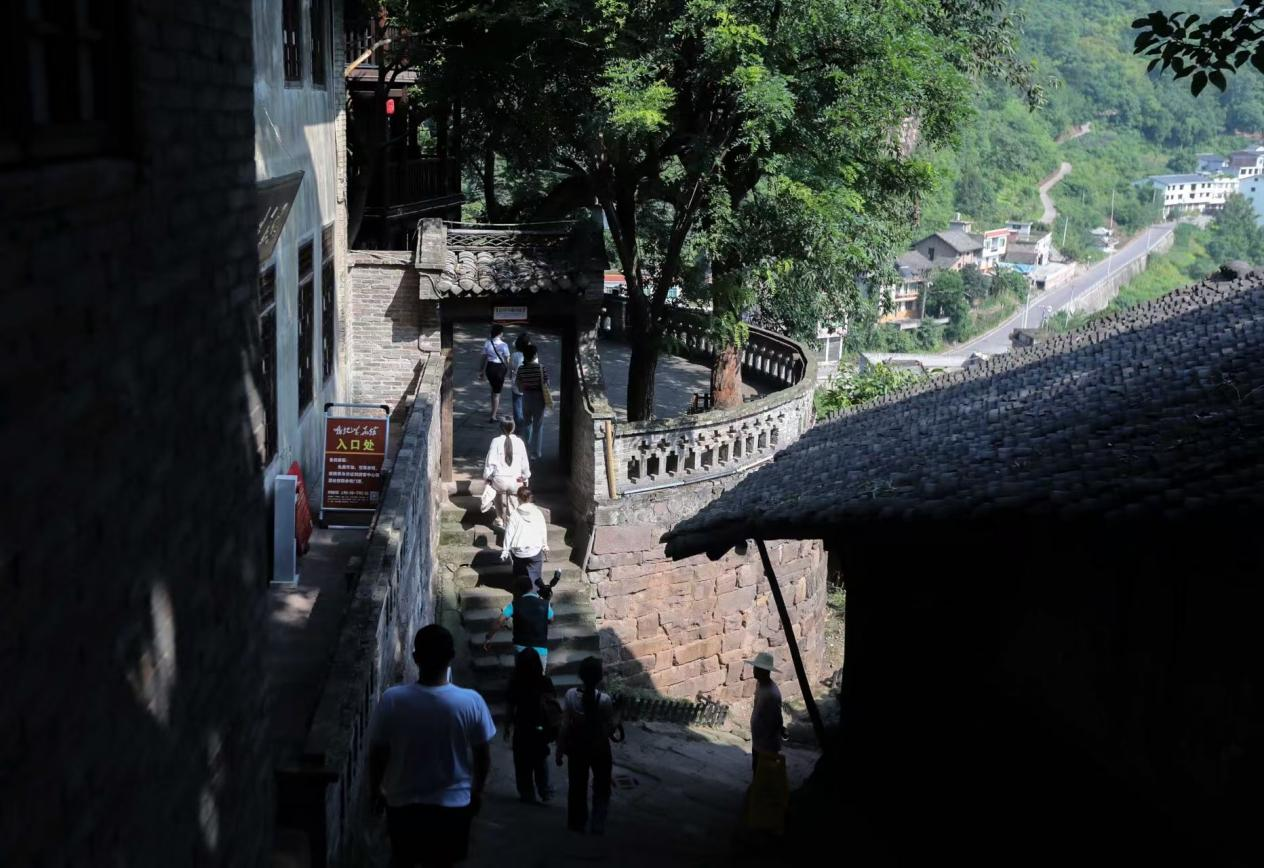
 Print
Print
Red Stories Told Along Chishui River: New Movement of Ethnic Unity Played in Taiping Ancient Town
2025/06/16 14:51 Origin:cced.cn
In a quaint courtyard of Taiping Ancient Town by Chishui River, bamboo hauling ropes coil around weathered wooden tables and benches. Hu Jinghua, a sprightly 79-year-old, sits amid them, recounting the Red Army's Four Crossings of the Chishui River to visitors. Once a boat tracker on the river, he has become a steadfast inheritor of the town's red legacy.

Hu's father, Hu Daocai, a veteran Red Army soldier, settled in Taiping Town after being wounded in 1935. When Hu Daocai passed away in 1953, Hu Jinghua was only seven. Nine years later, he followed in his father's footsteps, becoming a boat tracker alongside Jiang Mingwan, a comrade of his father. Jiang's stories of the Red Army ignited a flame in young Hu's heart.
Designated a National Historic and Cultural Town, Taiping Town in Gulin County, Luzhou City, Sichuan Province, holds significance as the main crossing point for the Red Army during the Second and Fourth Crossings of the Chishui River in the Long March. Driven by visitors' curiosity—especially among the youth—Hu decided to volunteer as a narrator of red history.
"As long as I breathe, I'll keep telling these stories!" Since 1995, Hu has set up a lecture space in his courtyard with square tables and benches, offering free tours of red history. "Each session lasts about an hour, sometimes several a day." For him, Red Army stories demand to be told, and their spirit inherited. "My biggest wish is for young people to remember this history and apply the Long March spirit to building our hometown. As our boatmen's chants go: 'Many hands row the big boat.' Only when all ethnic brothers and sisters unite can we improve our lives."
Hu's story epitomizes Taiping Ancient Town's transformation from a red hotbed to a cultural-tourism hub. During the Long March, locals raced to build floating bridges with boats and door panels to aid the Red Army, leaving 256 former garrison sites. However, the town once faced abandonment due to isolated traffic and lagging development.
The turning point came from activating its resources. Lei Yong, Head of Propaganda in Taiping Town, notes that the town has preserved its original features while developing tourism—renovating ancient buildings, upgrading utilities, and adding cafes, homestays, intangible cultural heritage halls, and clothing stores to enrich experiences.

As part of the Long March National Cultural Park, Taiping integrates red culture with the Miao and Yi ethnic cultures of Gulin. Visitors can don ethnic costumes in experience halls, creating unique cultural memories.
"We've created the 'Ancient Town Blessing · Spring Festival Hundred-Family Banquet' folk brand, attracting hundreds of Han, Miao, Yi, and other ethnic families. Long-street feasts have become bridges of unity," says Lei. Live dramas like Four Crossings of the Chishui River: A Remarkable Battle and Code Messages on Chishui River blend red and ethnic cultures, promoting integrated development.
Data shows Taiping received over 500,000 visitors in 2024. By now, 2025's visits have exceeded half of last year's total, with numbers expected to surge during the red-education peak from July to October.
Cultural-tourism integration has invigorated the local economy. In a new town café, Chen Ermei skillfully makes coffee, with daily revenue exceeding 3,000 yuan during this year's May Day holiday. She plans a "Four Crossings of the Chishui River" themed coffee series: "Let visitors taste red culture with their coffee."
"More tourists mean better lives," Chen reflects. Once a migrant worker, she now earns locally, accompanies her children, and witnesses new businesses—natural juice shops, ethnic clothing rentals—thrive in synergy.
As Chishui River rushes on, Hu's storytelling, café aromas, and banquet laughter compose Taiping Ancient Town's new chapter. Once "sleeping," the town now thrives with red culture as its soul, ethnic unity as its rhythm, and cultural-tourism integration as its path. (Text/Wang Weidong, Photos/Wang Lei)
Copyright © CCEDN.COM.CN. All Rights [京ICP备2024049485号-1] Tel: 0086-10-88820521

